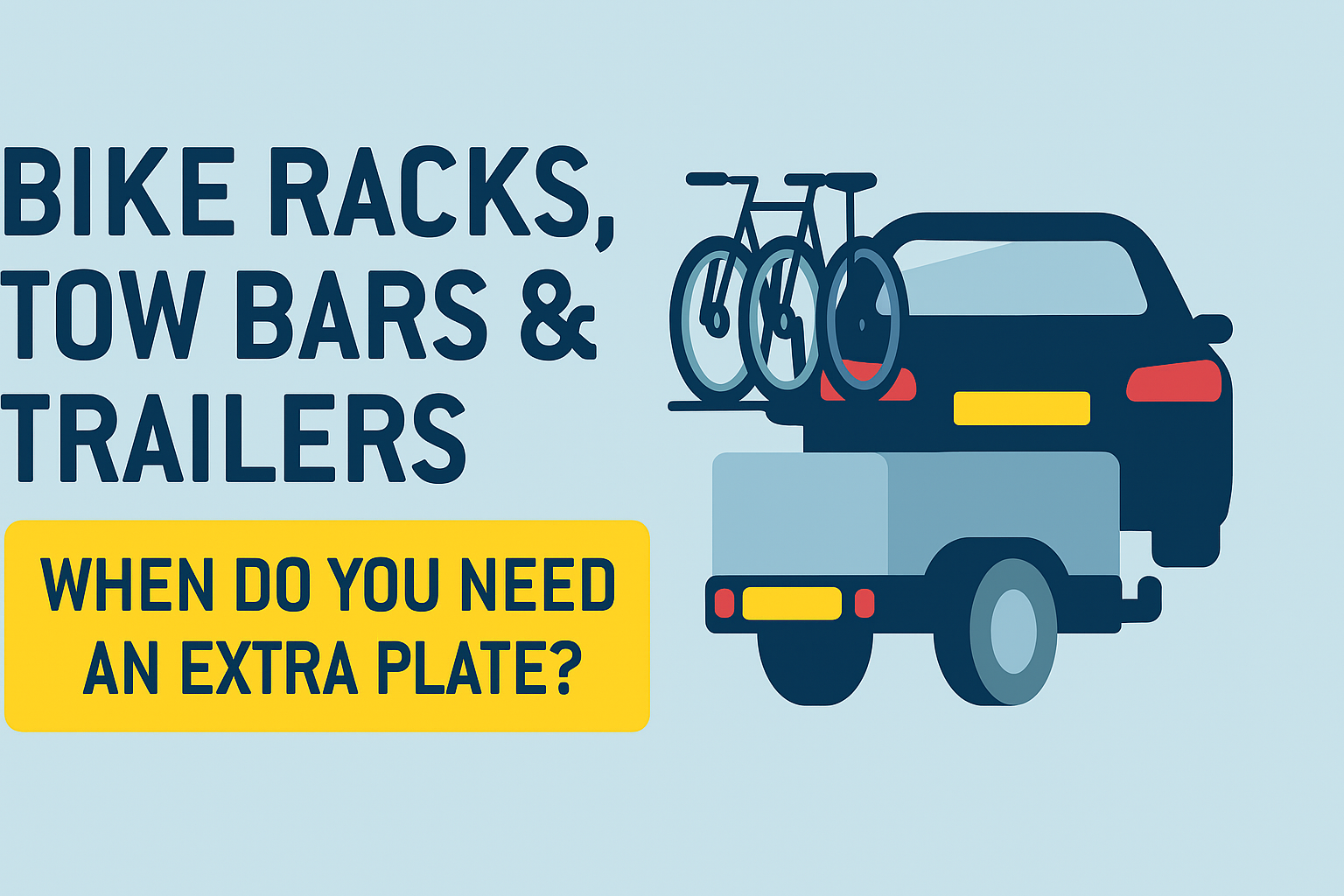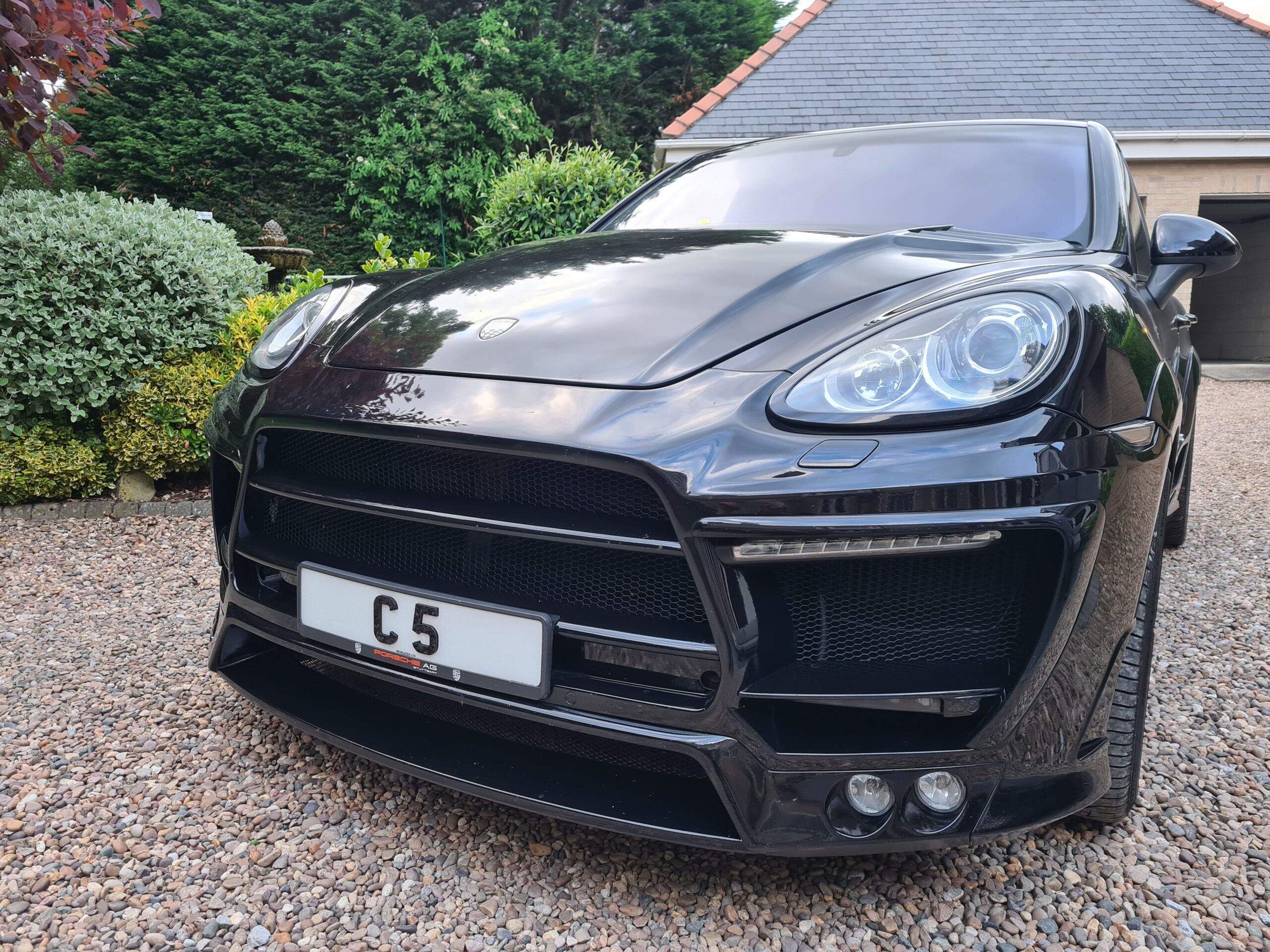
Bike Racks, Towbars & Trailers: When You Need an Extra Plate, Size/Placement Rules, and Lighting Requirements
Whether you’re heading out for a weekend cycling trip, towing a trailer for a house move, or hitching up a caravan for a holiday, it’s essential to understand how UK number plate laws apply to your setup. Misplaced or missing plates can lead to fines, points on your licence, or even impoundment of your vehicle. This guide breaks down when you need an extra plate, how to position it correctly, and what lighting requirements apply—ensuring you stay compliant and safe on the road.
UK drivers frequently use bike racks, towbars, and trailers for leisure and logistics. But many overlook the legal requirements for number plates and lighting when these accessories obscure the vehicle’s rear. This article explains when an extra plate is required, how to position it, and what lighting rules apply—helping you avoid fines and stay road-legal. For more insights on UK plate regulations, visit our guide to number plate laws and explore funny number plate ideas to personalise your ride.
When Is an Extra Plate Required?
If your bike rack, trailer, or towbar-mounted load obscures the rear number plate, UK law mandates that you fit a duplicate plate to the rear of the accessory. This applies to:
- Bike racks: Rear-mounted racks often block the plate and lights. A third plate must be affixed to the rack.
- Trailers: Any trailer that hides the towing vehicle’s plate must display a matching one at the back.
- Caravans, horseboxes, jet skis, boats: If they extend beyond the rear or block visibility, they require a duplicate plate.
The duplicate plate must match your vehicle’s registration exactly and be made to DVLA standards. Homemade plates (e.g. cardboard or printed paper) are not acceptable and can result in a fine of up to £1,000.
Size and Placement Rules
Number plates must conform to strict DVLA specifications:
- Font: Charles Wright font only.
- Size: Characters must be 79mm tall, 50mm wide (except for the number 1 or letter I), with 11mm spacing between characters.
- Material: Reflective background with no pattern.
- Markings: Must include the supplier’s name and BS AU 145e certification mark.
Placement guidelines:
- Trailers: Plate must be fixed to the rear. If towing multiple trailers, only the last trailer needs the plate.
- Bike racks: Plate must be securely attached to the rack—not loosely hung or taped.
- Caravans: If the vehicle’s plate is visible, no extra plate is needed. But if obscured, the caravan must display a duplicate.
For trailers going abroad, you may also need a trailer registration plate in addition to your vehicle’s plate. This must be placed as far away as possible from the towing vehicle’s plate, or on both sides if rear placement isn’t possible.
Lighting Requirements
If your accessory blocks the vehicle’s rear lights, you must install a lighting board that replicates:
- Brake lights
- Indicators
- Reverse lights
- Reflectors
This board typically plugs into the vehicle’s 12N socket and must be securely mounted. It should not include red reflective triangles unless you’re towing a trailer, as these are reserved for trailers only.
Key lighting rules:
- Lights must be clearly visible and not obscured by straps, bikes, or covers.
- Reflectors are required even if the board doesn’t include triangles.
- The lighting board must be road-legal and properly wired—DIY solutions are not acceptable.
How to Get a Legal Duplicate Plate
You must order your extra plate from a DVLA-registered supplier. Regplates.com offers fully compliant plates that meet all UK standards, including:
- Charles Wright font
- BS AU 145e certification
- Reflective finish
- Supplier details
You’ll need to provide proof of identity and proof of entitlement (e.g. V5C logbook) when ordering. Avoid cheap or non-compliant alternatives—they may look convincing but won’t pass legal scrutiny or ANPR systems.
Penalties for Non-Compliance
Failing to display a legal number plate on your trailer, bike rack, or towbar-mounted load can result in:
- Fines up to £1,000
- Points on your licence
- Vehicle impoundment
- Insurance invalidation
Police and ANPR cameras rely on clear, compliant plates to identify vehicles. If your plate is obscured or unreadable, you risk being flagged for enforcement—even if the obstruction is temporary.
Tips for Staying Legal and Safe
- Check visibility: Before every journey, ensure your plate and lights are visible from the rear.
- Use a lighting board: If your rack or trailer blocks lights, install a compliant board.
- Secure your plate: Use proper fixings—not tape or string.
- Clean regularly: Dirt and grime can obscure plates and lights.
- Double-check abroad: If towing internationally, research local rules and trailer registration requirements.
Useful Resources
- GOV.UK: Displaying Number Plates – Official DVLA guidance
- Regplates Blog: UK Number Plate Rules 2023
- Regplates Blog: Funny Number Plates

Jon Cherry is a Director of leading personalised number plate dealer Regplates.com. Jon has over 25 years industry experience handling some of the most expensive plates ever sold with many high profile and celebrity clients. Active since 1991 in the number plate industry, Jon is currently Chairman of the Cherished Numbers Guild, a trade body representing number plate dealers in the UK. Jon has written many articles on the industry and insight into the future of numberplates and the market as a whole.




